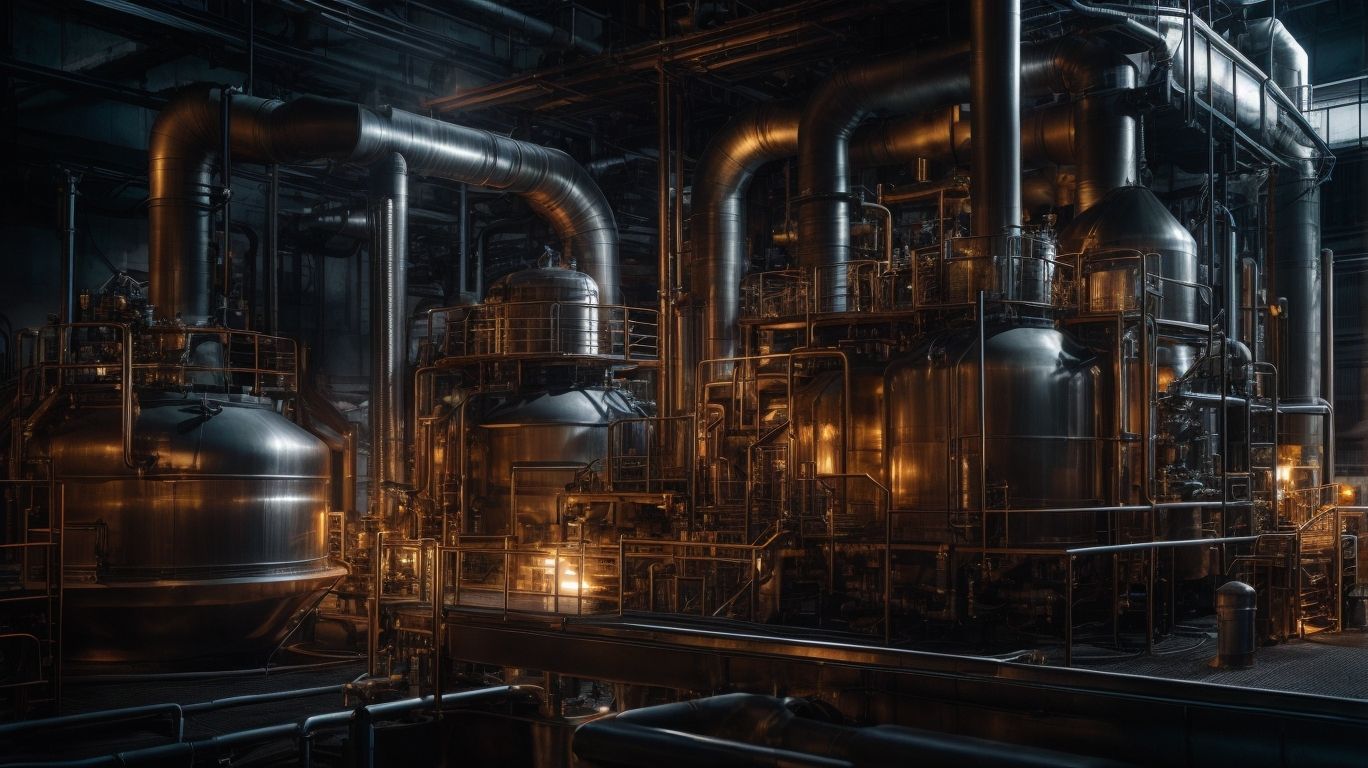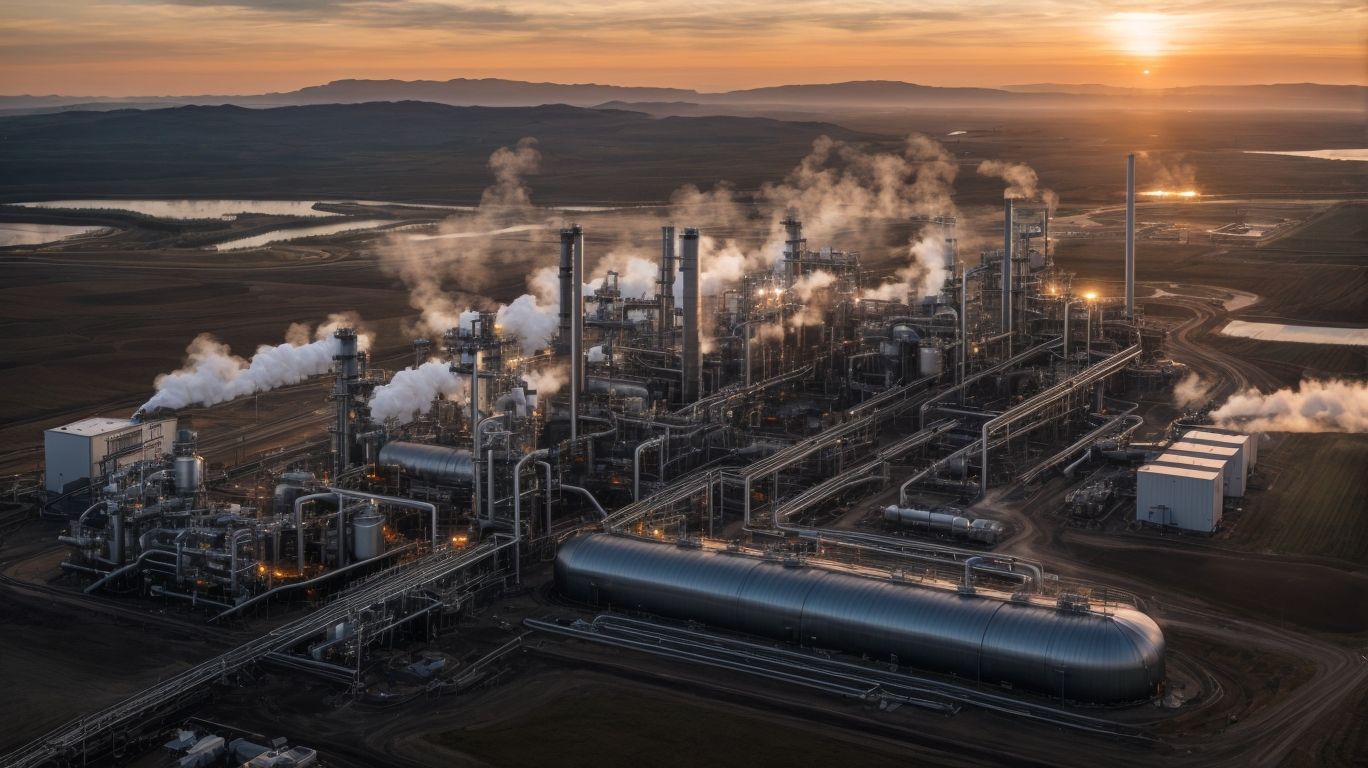Methanol, also known as methyl alcohol, is a colorless and flammable liquid that is primarily used as a chemical feedstock in the production of various substances. It is a versatile compound that has numerous industrial applications and is an essential component in various products we use in our daily lives. In this guide, we will delve into the process of methanol production, its uses, by-products, environmental impacts, and safety precautions, as well as the future trends in its production.
Methanol has a wide range of uses, including production of formaldehyde, acetic acid, and methyl tertiary-butyl ether (MTBE). It is also used as a fuel additive, solvent, and antifreeze agent. In recent years, there has also been an increasing demand for methanol as a substitute for gasoline in vehicles.
The most common methods of methanol production are:
- Natural gas reforming
- Biomass gasification
- Coal gasification
- Syngas fermentation
These methods involve the conversion of carbon-containing feedstock into synthesis gas, a mixture of hydrogen and carbon monoxide, which is then converted into methanol.
The process of methanol production involves three main steps:
- Synthesis gas production
- Catalytic conversion of synthesis gas to methanol
- Methanol purification
The synthesis gas is produced by reacting the feedstock with steam and oxygen, and then the synthesis gas is converted into methanol through a catalytic process. The final step is the purification of methanol to remove impurities.
In addition to methanol, by-products such as carbon dioxide, dimethyl ether, and higher alcohols are also produced during the production process. These by-products have various industrial applications and help in making the production process more efficient.
The production of methanol has both positive and negative environmental impacts. On the positive side, it is considered a cleaner fuel compared to gasoline and diesel, reducing emissions of pollutants such as sulfur and nitrogen oxides. However, the production process also generates a significant amount of carbon dioxide, contributing to global warming.
In the chemical industry, methanol is a key feedstock used in the production of numerous products, including plastics, resins, and synthetic fibers. Its versatility and low cost make it a highly sought-after chemical in various industries.
It is essential to follow safety precautions during methanol production, as it is a highly flammable and toxic substance. Protective equipment, proper ventilation, and monitoring of air quality are crucial to ensure the safety of workers and the environment.
In the future, there is a growing interest in renewable methanol production, using carbon dioxide as a feedstock instead of natural gas. This method has the potential to reduce carbon emissions and make methanol production more sustainable.
In conclusion, methanol is a vital compound in the chemical industry, and its production process is constantly evolving to meet the increasing demand. As we look towards more sustainable practices in the industry, the future of methanol production holds promising advancements in technology and methods.
Key Takeaways:
What Is Methanol?
Methanol, also known as methyl alcohol, is a colorless, flammable liquid with a slightly sweet odor. It is commonly used as a solvent, antifreeze, fuel, and as a denaturant for ethanol. Additionally, methanol is a crucial ingredient for the production of formaldehyde and acetic acid. This versatile chemical is typically derived from natural gas, making it a vital element in many industrial procedures.
Interestingly, methanol was originally obtained through the destructive distillation of wood in the 1800s, which is why it was initially called ‘wood alcohol‘.
What Are the Uses of Methanol?
Methanol, also known as wood alcohol, is a versatile substance used in various applications. It is commonly employed as a solvent, antifreeze, fuel, and as a denaturant for ethanol. Methanol is also utilized in the production of formaldehyde, a vital ingredient in the manufacturing of plastics and resins.
Furthermore, methanol finds its use in the synthesis of various chemicals like acetic acid, methyl tert-butyl ether (MTBE), and dimethyl ether (DME), highlighting its significance across different industries.
Considering its diverse applications, methanol proves to be an indispensable component in numerous sectors, including automotive, pharmaceutical, and chemical manufacturing.
When examining the uses of methanol, it is crucial to acknowledge its pivotal role in driving innovation and sustainability, particularly in the realm of renewable energy and clean fuel technologies.
What Are the Different Methods of Methanol Production?

Photo Credits: Chemicalglossary.Net by Jacob Ramirez
When it comes to producing methanol, there are several methods that can be utilized, each with its own unique process and benefits. In this section, we will discuss the various techniques used in methanol production, including natural gas reforming, biomass gasification, coal gasification, and syngas fermentation. By examining these methods, we can gain a comprehensive understanding of the different ways in which methanol can be produced and the factors that influence each process.
1. Natural Gas Reforming
- Natural Gas Reforming: Natural gas undergoes desulfurization to remove sulfur compounds, preventing poisoning of the reforming catalyst.
- Steam Reforming: The desulfurized natural gas is mixed with steam and then heated in a reformer to produce a mixture of hydrogen, carbon monoxide, and carbon dioxide.
- Shift Conversion: The mixture is then subjected to a shift conversion process to increase the hydrogen content and reduce carbon monoxide levels.
- Carbon Dioxide Removal: The produced hydrogen is purified, and the remaining carbon dioxide is removed, resulting in a high-purity hydrogen gas stream.
2. Biomass Gasification
- Feedstock Preparation: Biomass feedstock such as wood chips, agricultural residues, or organic waste is prepared for biomass gasification.
- Gasification: Biomass is converted into synthesis gas through a high-temperature, oxygen-limited process.
- Syngas Cleaning: The raw syngas undergoes cleaning processes to remove impurities and tar.
- Catalytic Conversion: The cleaned syngas is then catalytically converted to produce methanol.
- Purification: The produced methanol is purified to obtain the desired quality.
In the 1800s, the concept of biomass gasification was advanced by William Siemens, laying the groundwork for modern biomass gasification methods.
3. Coal Gasification
- Coal gasification is a thermo-chemical process that converts coal into a synthesis gas (syngas) comprising carbon monoxide, hydrogen, and carbon dioxide.
- The process involves partial oxidation of the coal at high temperatures and pressures in the presence of steam and controlled amounts of oxygen.
- Syngas produced from the 3. Coal Gasification process is then utilized in the production of methanol through catalytic conversion.
4. Syngas Fermentation
- Preparation of syngas: Syngas is a mixture of carbon monoxide, carbon dioxide, and hydrogen. It is produced by reforming natural gas, gasification of biomass, or coal, or through partial oxidation of hydrocarbons.
- Syngas Fermentation: Syngas is converted into methanol through a fermentation process using specific microorganisms such as acetogenic bacteria or archaea.
- Purification: The produced methanol is then purified to remove any impurities and achieve the desired level of purity.
What Is the Process of Methanol Production?

Photo Credits: Chemicalglossary.Net by Donald Thomas
Methanol, also known as wood alcohol, is a versatile and widely used chemical compound. But have you ever wondered how it is produced? In this section, we will explore the process of methanol production, from the production of synthesis gas to the final purification of methanol. We’ll dive into the three main stages of the process: synthesis gas production, catalytic conversion of synthesis gas to methanol, and methanol purification. Get ready to learn everything you need to know about the fascinating process of methanol production.
1. Synthesis Gas Production
- Feedstock Selection: Choose a suitable feedstock such as natural gas, coal, or biomass, based on availability and cost.
- Synthesis Gas Production: Converting the feedstock into synthesis gas through high-temperature reactions with controlled amounts of oxygen and steam.
- Gas Cleaning: Remove impurities, like sulfur compounds and particulates, from the synthesis gas to prevent catalyst poisoning.
- Shift Reaction: Adjust the hydrogen to carbon monoxide ratio in the synthesis gas for optimal methanol production.
2. Catalytic Conversion of Synthesis Gas to Methanol
The process of converting synthesis gas to methanol through catalysis involves the following steps:
- Preparation of synthesis gas containing hydrogen and carbon monoxide.
- Passing the synthesis gas over a copper-zinc-aluminum oxide catalyst.
- Reactions taking place under high pressure and moderate temperature conditions to form methanol.
- Separation and purification of methanol from the reaction mixture.
3. Methanol Purification
- Distillation: The crude methanol is heated, and the vapor is collected, condensed, and purified to obtain pure methanol.
- Dehydration: Water present in the methanol is removed using methods like adsorption or azeotropic distillation.
- Rectification: Further purification is achieved through rectification processes to eliminate impurities and obtain high-purity methanol.
What Are the By-Products of Methanol Production?
The by-products of methanol production include:
- formaldehyde
- acetic acid
- dimethyl ether
- methylamines
which are crucial in the production of a wide range of products such as plastics, paints, pharmaceuticals, and textiles. These by-products play a significant role in the chemical industry’s diverse manufacturing processes and are essential to the economy. It is important to recognize the versatile applications of these by-products in various industrial sectors when considering methanol production. By exploring innovative methods of utilizing these by-products, we can promote sustainable and efficient manufacturing processes.
What Are the Environmental Impacts of Methanol Production?
Methanol production can have a considerable environmental impact, including air and water pollution, deforestation, and greenhouse gas emissions. The production process releases volatile organic compounds (VOCs), contributing to air pollution. Proper disposal of production waste is also crucial to prevent contamination of water sources.
To address these issues, companies are adopting cleaner production methods and incorporating renewable energy sources. Recently, a chemical plant in the Midwest successfully implemented a sustainable methanol production process, resulting in a 30% reduction in its carbon footprint and the preservation of nearby forests.
How Is Methanol Used in the Chemical Industry?

Photo Credits: Chemicalglossary.Net by Jeffrey Torres
- As a Feedstock: Methanol is a crucial ingredient in the production of formaldehyde, acetic acid, and other chemicals.
- Production of Olefins: It is converted into light olefins such as ethylene and propylene, which are essential for manufacturing plastics.
- Fuel Additive: Methanol is often blended with gasoline to improve its octane rating and reduce harmful emissions.
- Solvent: It is used as a solvent in the production of various materials, including paints and plastics.
Considering the versatility of methanol in various chemical processes, it is clear that this compound plays a vital role in the chemical industry, serving as a feedstock, fuel additive, and solvent, among other uses.
What Are the Safety Precautions for Methanol Production?

Photo Credits: Chemicalglossary.Net by Joe Rodriguez
Safety precautions are essential for methanol production to prevent accidents and protect the well-being of workers. When handling methanol, it is crucial to use protective equipment to avoid skin or eye contact. Adequate ventilation is also necessary to prevent the build-up of methanol vapors and reduce the risk of exposure. Due to its flammability, it is important to implement fire safety measures, such as using fire-resistant construction materials and installing fire suppression systems. Additionally, thorough training should be provided to all personnel on safe handling, storage, and emergency response procedures.
What Are the Future Trends in Methanol Production?

Photo Credits: Chemicalglossary.Net by Joshua Walker
Methanol production is on the cusp of major advancements in the coming years. Innovations such as the creation of highly efficient catalysts, the utilization of renewable energy sources, and the incorporation of carbon capture and utilization technologies are set to transform the industry. These trends are in line with the worldwide movement towards sustainability and environmentally-friendly practices in the production of chemicals.
